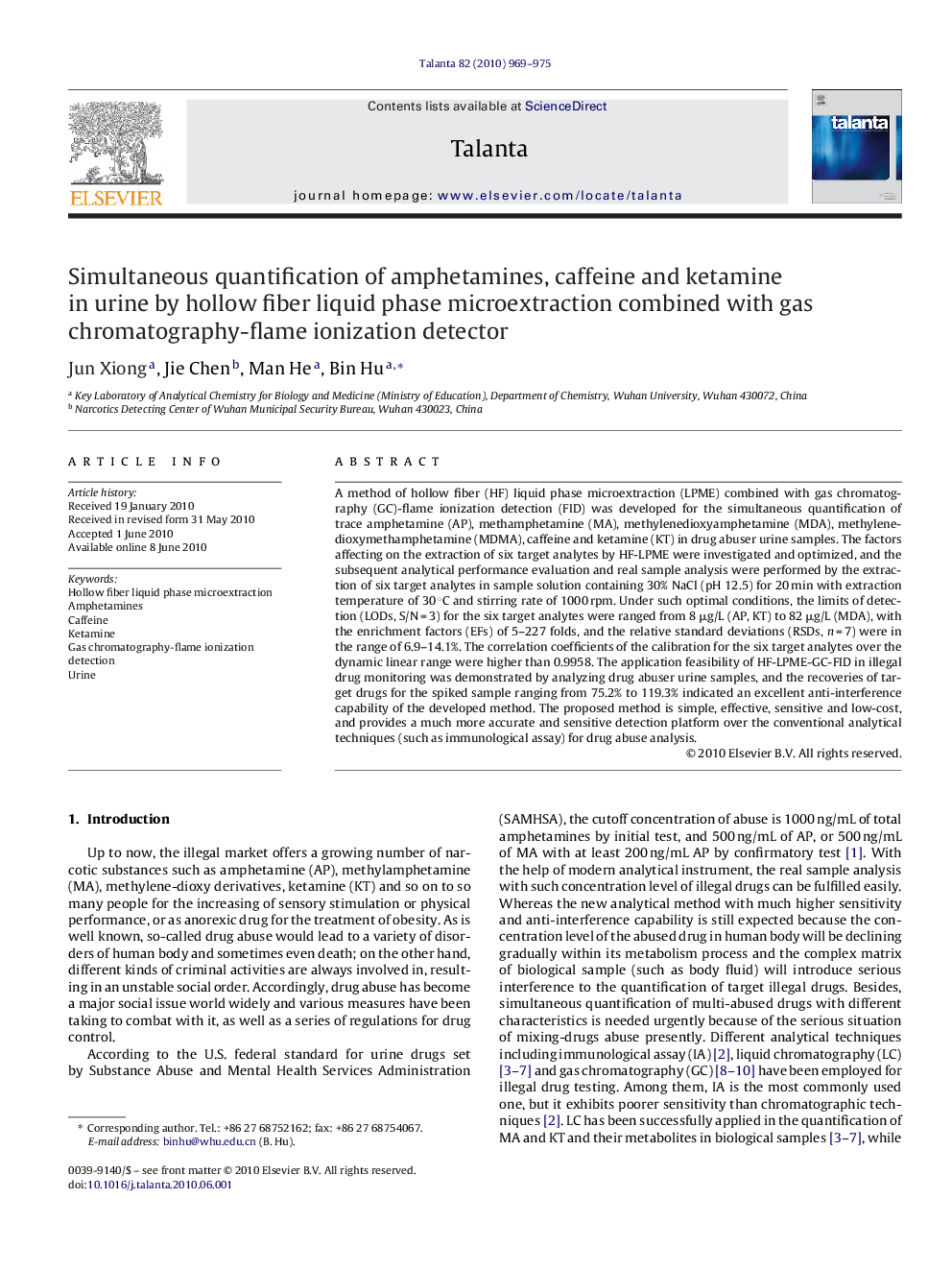| Article ID | Journal | Published Year | Pages | File Type |
|---|---|---|---|---|
| 1244597 | Talanta | 2010 | 7 Pages |
A method of hollow fiber (HF) liquid phase microextraction (LPME) combined with gas chromatography (GC)-flame ionization detection (FID) was developed for the simultaneous quantification of trace amphetamine (AP), methamphetamine (MA), methylenedioxyamphetamine (MDA), methylenedioxymethamphetamine (MDMA), caffeine and ketamine (KT) in drug abuser urine samples. The factors affecting on the extraction of six target analytes by HF-LPME were investigated and optimized, and the subsequent analytical performance evaluation and real sample analysis were performed by the extraction of six target analytes in sample solution containing 30% NaCl (pH 12.5) for 20 min with extraction temperature of 30 °C and stirring rate of 1000 rpm. Under such optimal conditions, the limits of detection (LODs, S/N = 3) for the six target analytes were ranged from 8 μg/L (AP, KT) to 82 μg/L (MDA), with the enrichment factors (EFs) of 5–227 folds, and the relative standard deviations (RSDs, n = 7) were in the range of 6.9–14.1%. The correlation coefficients of the calibration for the six target analytes over the dynamic linear range were higher than 0.9958. The application feasibility of HF-LPME-GC-FID in illegal drug monitoring was demonstrated by analyzing drug abuser urine samples, and the recoveries of target drugs for the spiked sample ranging from 75.2% to 119.3% indicated an excellent anti-interference capability of the developed method. The proposed method is simple, effective, sensitive and low-cost, and provides a much more accurate and sensitive detection platform over the conventional analytical techniques (such as immunological assay) for drug abuse analysis.
